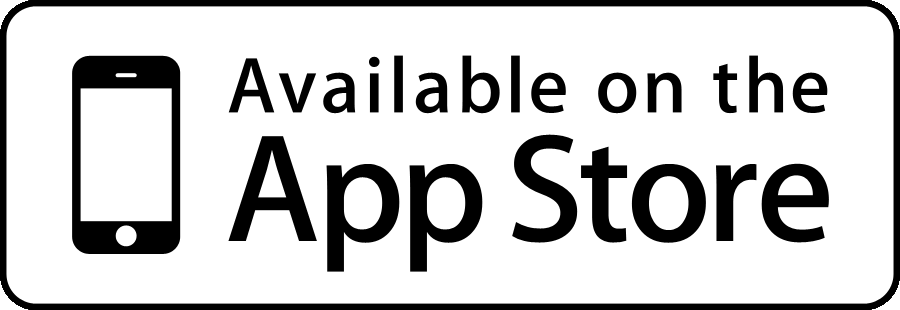The Multi-Pronged Approach To Trade Show Lead Generation
What software pricing can teach us about capturing trade show leads
There’s a good reason why software companies offer pricing tiers — instead of just having a single price-point per user (or per customer).
It’s so they can maximize their revenue across the many different customer types who may want to use their software.
Say I am a potential customer. If I head up a small team and only want to use the software’s basic functionality, I’m not willing to pay too much.
However, if you are in the Procurement team for a large enterprise, you may need your guys to have access to every feature (and a dozen other add-ons that ensures the software works for you). In that case, you’d be willing to invest way more than I would — both in terms of financial outlay, and the effort you exert to get it right.
A software company that offers pricing tiers can maximise the share-of-wallet they take from both of us. They use the same core piece of technology, and package it in such a way that they (hope to) claim 100% of what I was willing to spend, and 100% of what you were willing to spend.
If they didn’t do this — if they just offered a single price-point for every company who wanted to use their tool — they’d leave a ton of revenue on the table. Invariably, their offering would be too expensive for me, so they’d lose my revenue. And it would probably cost less than you were willing to spend on it, so they’d miss out there too.
One-size does not fit all. Well, not if the company is interested in maximizing their return. So they must tailor their approach to each type of customer.
How does this lesson relate to how we capture leads at events?
Most of us B2B marketers have long-ish sales cycles. Certainly longer than B2C, and probably longer than the average (more-transactional) SMB offering.
Over the course of a trade show or conference sponsorship, we’re meeting hundreds of different attendees. And these attendees have varying levels of awareness of our company and our offerings.
Some will only know “they must have something to do with ABC” because we’re exhibiting at the ABC Show. Others will have heard our name somewhere, but not know where; and yet others will have a rough idea of the problems we’re trying to solve. Our favourite attendees, of course, are those who know what we do and have come to talk to us, because they think we can help.
The more deeply an attendee is aware of what you do and how you can help them, the more they are willing to invest in you.
(Note: awareness levels can change quickly. We’ve all seen attendees go from being completely unaware of your company to being desperate to get a follow-up in the diary, as you’ve articulated that you can solve a big problem for them.)
And this is where the software analogy comes into play:
Where our software company wants to maximise the share-of-wallet from each customer-type, you want to maximise the share-of-attention from every attendee-type.
Think of it as you getting the best possible return from every type of attendee, while taking into account how much they’re individually willing to invest.
Let’s look at an example.
For event attendees who only have a vague idea of what we do, the best we can probably hope for is to educate them on our offering over time. You’re probably not going to sell to them today, and they probably wouldn’t be willing to invest a lot of time with your Sales team anyway.
That’s what our nurture campaigns in Marketo, Eloqua, and Hubspot are designed for. Say 50% of the attendees you engage are in this ‘stage’ after they’ve spoken with you at the booth. If all those attendees end up being educated by your content over time — which has an almost negligible cost to your business if done correctly — then there’s not much more you can ask for from your engagement with those attendees.
As a further example, if we then move down the funnel to trade show attendees who are more aware of what you do, you should be aiming to capture more of their attention.
These attendees are more willing to invest time with you (though that’s not to say that they automatically will do so). Perhaps these attendees (or maybe we can finally justify calling them prospects) could be encouraged to speak with a member of your team after the event. The call would need to be sold to them as being worth their while. Perhaps this team member has knowledge of working with other companies in their sector, or has specific thoughts around the problems that they face.
A post-event call is an appropriately valuable result for you, given this prospect-type. So you should strive to make it happen.
Now, I cannot prescribe what every appropriate result is for your business and for each of your prospect-types. But the process of segmenting your prospects into groups and identifying mutually-beneficial goals for each group will see you improve the return on your events spend. You’ll be maximising every opportunity, regardless of how good that opportunity actually is.
As a further example, our company helps Event Marketers extract as much value as possible when they meet with the most-engaged prospects — those who are willing to invest a fair chunk of their attention.
As a counterpoint, putting a highly-engaged (and hence valuable) prospect into an automated Marketo nurture campaign is not maximising your value.
Instead, this Marketer may want to capitalise on their momentum by booking the prospect in for a follow-up call with a hand-picked member of their team — one who is best-placed to help them. This will result in fewer “great leads” going AWOL post-event. The Marketer may also want to quickly record a voice memo about their conversation with the prospect, as they have a team back at HQ who’ve been diligently trying to break into this account for months, and they all want some insight into what’s going on over there.
It’s easy to see that, for both the exhibitor and the engaged prospects, this is a much more valuable end-result from that conversation.
So far, we have seen three approaches for appropriately engaging prospects (auto-nurturing, getting commitment for a follow-up, and actually scheduling a call with a hand-picked Salesperson). You can see how one exhibitor could work all three approaches into a single event campaign.
Here are a few more approaches that could make sense:
- Trade show attendees loved a talk that your VP gave at the event, and were promised the slides. Your VP could direct the attendees towards your booth and — if they’re not interested in anything other than the slides — you could create a quick way to capture those leads and instantly send them the slides.
- At many events you meet with employees at target accounts, but they’re fairly low-level. They’re not decision-makers, and you’re not going to sell to these people directly. But they are hands-on, working in your problem area every day, and they can share info that you can use to sell further up the food chain.
Now, you’ll need to remain respectful of these people — they can sabotage your efforts before you’ve even started — but through clever questioning and the delivery of insight during your conversation, you can use these prospects to your advantage.
These are just examples — and they won’t work for everyone. But they highlight how you can extract much more value from engaging some prospects over others.
And being in a place to better capitalise on prospects who are further down the sales funnel has the same results as our software company when they created their higher-level price plans — both are optimizing for the single group who are disproportionately more valuable to the business.
(I know a company who use Account-Based Marketing, and who also attend events. If you meet with them, and you happen to fall outside of their core target account-base, you’ll be on the receiving-end of a fairly standard follow-up procedure. If you’re one of their core targets, however, without realising it you’ll be added into a highly-choreographed ‘play’, between multiple members of their team, all focused on winning your business. Now, that’s a company that knows how to maximise their results from different types of opportunity.)
So how can you create a multipronged approach to engaging prospects at events?
(...an approach that has appropriate actions and appropriate goals for each prospect-type.)
I like to start by ignoring event technology (which is a bit weird for the Co-Founder of an event technology startup).
For any given prospect-type, what would you want to do if event-tech wasn’t a thing?
If you’re an open-source software company and you want developers to download your software from your website, you’ve got to be thinking about scale. Developers are not going to want to talk to a salesperson and you can’t afford to have salespeople talking to all your free users. So a process for getting the correct content and URLs into the hands of as many developers as possible sounds like a good plan.
Throwing event-tech back into the mix, a simple badge scanner plus an excel upload to your Marketing Automation tool would suffice.
But what if you have lots of in-depth discussions with prospects (or members of the press, or potential partners) at your trade shows? How do you maximise your return on those opportunities?
Ignoring event apps again, perhaps you keep a secretary available on the end of the phone, and whenever you finish with one of these deep and meaningful conversations, you call her up and ask her to transcribe everything you’re telling her.
That might seem like overkill — or even a little far-fetched — but if your team are having 50 of those types of conversations over the course of an event, maybe the value of remembering all the details justifies the effort!
Of course, there’s tools that can make this easier for you. But regardless of the tools at hand, the idea is to think beyond the default way of engaging prospects at events, and see if there are ways to extract more value from your conversations where possible.
For many B2B marketers, having a spreadsheet full of names at the end of an event — the default way — is not appropriately valuable.
Sure, for swag-hunters who are only going to be added to your database, that might be fine. But nowadays there’s dozens of tools you can use to get names into a database, and they’re much cheaper (and more targeted) than attending an event.
For most of us, we need to try and extract more value from the event-based interactions we have. So ask yourself the following questions:
- Which types of prospects are we going to meet at this event?
- How can I engineer mutually-beneficial ‘touches’ with each of these prospect-types?
Salespeople are under pressure to make this quarter’s quota, yet they’re also under pressure to help Marketing show their events investment is bearing fruit.
I’m sure you could brainstorm half a dozen types of prospects you meet, and even more ways to extract an increasing amount of value from conversing with each of them.
And when you do, you’ll know you’re making the most of every opportunity that comes your way.

Brian Anderson
Co-Founder of Captuvate



